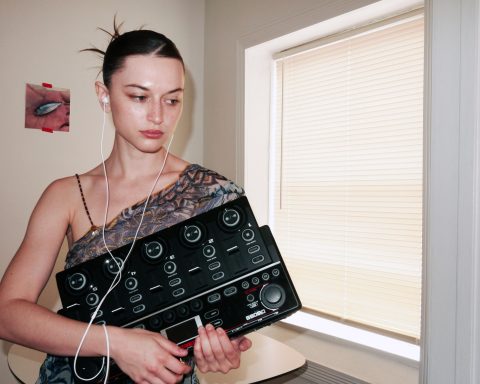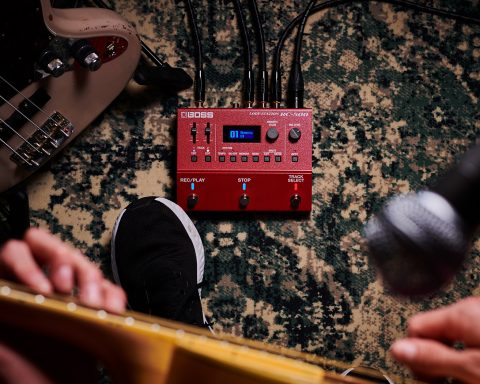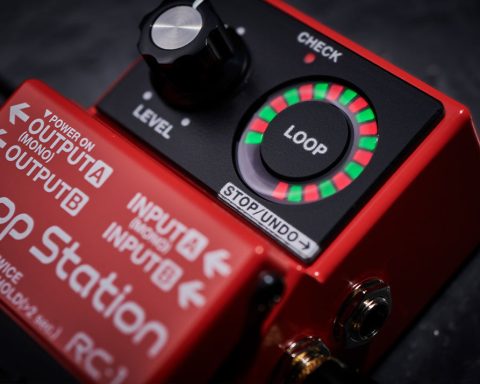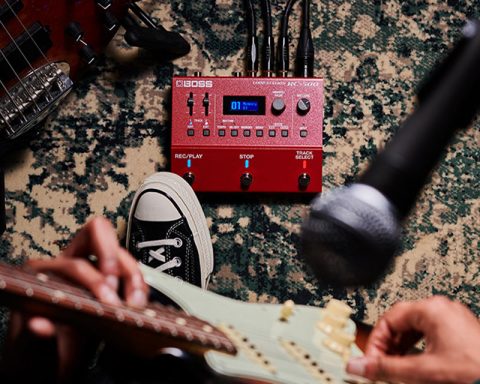Picture this: you’re sitting with your acoustic guitar, lost in a new idea. You strum a chord progression, which at first is simple, but you know it has potential. Then, you stomp on your loop pedal switch. Suddenly, the same progression plays back, just like another guitarist is sitting with you, giving you space to layer a fingerpicked melody on top. You stomp again, add a percussive rhythm on the guitar’s body with your hand playing a “snare” style beat, and now it sounds like there’s an entire band behind you. It’s just you, your guitar, and a loop pedal, but the possibilities now feel endless. Here is everything you need to know about loop pedals for acoustic guitar.
Street Corners to Stadiums
A loop pedal is one of the most useful things you can add to your rig as an acoustic guitarist. Loop pedals and acoustic guitars are a match made in musical heaven as they let us jam along with ourselves, layering dual chord progressions or delicate fingerpicking over the huge choruses we’re building for our headline show at Glastonbury, and they even create entire compositions without needing a full band.
If you’re a singer-songwriter, a looper helps you write and perform multi-layered songs and even soundscapes that give the illusion of multiple musicians playing with you. If you’re a solo guitarist, you can add effects, beats, and rhythm to your performances just by stomping on a switch without needing a massive pedalboard. Whether you’re writing, recording, or performing live, a loop pedal can be your best bandmate—minus the arguments.
From buskers on street corners to stadium headliners, acoustic musicians worldwide use loopers to transform their sets and create viral performances. If you’ve ever watched Ed Sheeran, KT Tunstall, or Gerry Cinnamon craft a song live, you’ve already seen how powerful looping can be. So, where do you start with a looper pedal for an acoustic guitar?
Whether you’re looking to experiment at home, build your songwriting skills, or take your live show to the next level with a loop pedal for acoustic guitar, let’s break down how a loop pedal can completely change the way you play your acoustic guitar.
Loop Pedals Basics
A loop pedal is a guitar pedal that allows acoustic guitarists (or any guitarist, for that matter) to record, layer, manipulate, and then loop their sounds in real time. With a stomp on the footswitch, you can capture a rhythm track or verse line, layer a melody over it, add harmonics or percussive elements like tapping, and even layer vocal tracks over the top, using your acoustic guitar, your voice if you’re singing, and your looper.
When you play guitar with the looper hooked up and engaged, it records a section for you. After you step on the pedal again, it plays it back for you. Repeat.
How a Loop Pedal Works
- Record: Step on the footswitch and start playing your guitar phrase or chord progression. If you’re using the BOSS RC-1, RC-5, or RC-600, tap the footswitch once to start recording, and the pedal will record the section you’re playing (be sure to start on beat 1). At the end of your phrase, stomp on the switch again to stop the loop.
- Playback: Once you step on the pedal, you’ll stop recording, and the loop will start playing back instantly. Now, you can start improvising over the top, adding some melodic fingerpicking, rhythmic strumming, or percussive hits on your guitar body.
- Layer: This is where the magic happens. With the loop playing, step on the footswitch again to add another layer like a bassline on the low E string, a hum with your voice if you have the mic hooked up, a lead lick, or even a percussive groove by tapping on the guitar body or hitting the 12th fret harmonics. Add as many layers as you want, or keep it simple with a “drum” tap, bass line, and guitar lines.
Floor-Based and Tabletop
As an acoustic guitarist, you’ll need a floor-based looper, but I’ll explain the difference between floor-based and tabletop loopers so you know the difference. Essentially, floor-based loopers are foot-operated, and tabletop loopers are hand-operated.
- Floor-based loopers: These are foot-controlled like the industry standard, entry-level looper BOSS RC-1 and perfect for acoustic guitarists who want to loop guitar lines straight out of the box.
- Tabletop loopers: While primarily used by electronic musicians and beatboxers, tabletop loopers like the RC-505mkII can be helpful for singer-songwriters who want to loop both vocals and guitar. But for most acoustic players a floor-based option is the more practical choice.
For acoustic musicians who want to loop vocals as part of their performances, the setup is typically either:
Guitar → Loop Pedal → Amp/PA System
Guitar + Microphone → Loop Pedal → Amp/PA System
Any musician can use loop pedals, whether you’re a beatboxer, vocalist, or electric guitarist, but acoustic guitarists tend to use them slightly differently than others. Let’s take a look at looping and loop pedals for acoustic guitars.
Here’s a great video on how to get started with a loop pedal to show you how easy it is to get started.
How Do Acoustic Guitarists Use Loop Pedals?
There’s absolutely no golden rule in how you use your loop pedal with an acoustic guitar, but the most common ways an acoustic guitarist uses a loop pedal are to:
- Layer chord progressions to create a whole backing track.
- Record percussive beats using the guitar body or muted strumming.
- Add lead melodies or vocals to build a complete sound.
Here are some more ways acoustic guitarists use loop pedals.
Creating Drum Beats or Rhythms
Many acoustic guitarists who use loopers, like Ed Sheeran, KT Tunstall, Newton Faulkner, and others, use their guitar body as a percussion instrument, tapping out beats before looping chord progressions on top. This technique provides a rhythmic foundation that allows you to not only keep time but also gives the illusion of a drummer playing with you.
Probably the most famous video of this in action is this video of Ed Sheeran using a BOSS Loop Station, where he illustrates exactly how he builds tracks.
Building Multi-Layered Melodies
By stacking vocal harmonies and vocal melodies, acoustic guitarists can craft intricate musical arrangements on the spot, adding emotional depth and dynamics to their sound without additional musicians.
Watch Laura Davidson use the BOSS VE-8 Acoustic Singer to layer vocal harmonies and chords to build an entire vocal track with the looper function on this pedal.
Making Songwriting and Practice More Productive
Loop pedals are fantastic tools for songwriting and practice as they allow you to experiment with new chord progressions, test out melodies, and practice lead guitar over self-recorded backing tracks. You can record a chorus playing chords, then play lead over the top of it. Or vice versa! In addition, you can loop chords and sing over the top of them, working out vocal melodies and hooks.
Live Performance
One significant benefit of any BOSS loop station is its ease of use. It’s easy to build tracks on the fly during a live set, which is precisely what Ed Sheeran does. You can build a track on stage or in the studio. Use loops to create arrangements on the spot, slightly differing each time to keep the show fresh.
One way that many solo acoustic performers use loopers is to make the act of building a loop part of the show and your performance. This is why this video of Ed Sheeran went viral; he rebuilt the track on the spot for the performance.
What is The Best Loop Pedal for Acoustic Guitarists?
As always, there’s no right or wrong answer here, but when choosing a loop pedal for acoustic guitar from BOSS and Roland, a handful are consistently relied upon by acoustic guitarists. If I had to drill it down to five pedals, the five best loopers for acoustic guitarists would be the industry standard BOSS RC-1, then gradually, with more functionality, I’d go with the BOSS RC-5, BOSS RC-10R, BOSS RC-600, and finally, the BOSS VE-8 Acoustic Singer. Here’s why they’re the best and most popular loop pedals for acoustic guitarists:
BOSS RC-1
- Ideal for: Beginners, solo acoustic players, and singer-songwriters looking for simple looping straight out of the box.
- Features: Up to 12 minutes of stereo recording time, one-level looping, visual loop indicator, compact and rugged, runs on a 9V battery or optional AC adapter.
- Benefits for acoustic guitarists: The RC-1 lets you loop without distraction to focus on playing—perfect for solo performances, practice, or songwriting. It also has an LED circular light that tells you when the loop starts/ends.
"Hands-free operation makes the RC-500 perfect for live singers who also play an instrument, and it's set up for vocalists."
BOSS RC-5
- Ideal for: Intermediate players, live performers, and acoustic musicians who want advanced looping.
- Features: 32-bit AD/DA and 32-bit floating-point processing, 13 hours stereo recording time, 99 phrase memory, 57 preset rhythms with A/B variations, seven drum kits, reverse, MIDI I/O, USB for loop backup and load WAV files.
- Benefits for acoustic guitarists: The RC-5 has all the features to incorporate rhythm tracks and complex loops into your live sets and add more depth and nuance to your live performances.
BOSS RC-10R
- Ideal for: Singer-songwriters, live performers, and acoustic musicians who want rhythm accompaniment with looping.
- Features: Combines song-based looping with dynamic rhythms, over 280 preset rhythms with two sections, intros/endings and transition fills, 16 drum kits, 6 hours stereo recording time, 99 phrase memories, support for external footswitches, expression pedals, and MIDI control.
- Benefits for acoustic guitarists: The RC-10R’s rhythms and looping let you create full arrangements on the fly and use a microphone at the same time.
BOSS RC-600
- Ideal for: Advanced acoustic players, multi-instrumentalists, live-looping pros.
- Features: 6 stereo phrase tracks, 32-bit AD/DA and 32-bit floating-point processing, nine footswitches, 49 input FX and 53 track FX with four simultaneous uses per section, 2 XLR mic inputs with phantom power, two stereo line inputs, three stereo line outputs, 99 memories, over 200 onboard rhythms, deep MIDI control, USB for data backup and phrase import/export.
- Benefits for acoustic guitarists: The RC-600 is the most flexible and controllable looper ever. It lets you create complex multi-layered performances with studio-quality sound, has extensive effects processing, and has an XLR so you can use complete vocal performances, samples, and snippets as part of your performances.
Bonus: BOSS VE-8 Acoustic Singer
- Ideal for: This is ideal for acoustic guitarists who sing, singer-songwriters, and solo performers who want vocal and guitar effects with looping—it is tailor-made for acoustic guitarists.
- Features: Compact all-in-one preamp and effects, studio-quality vocal processing with ambience effects, real-time vocal harmonies based on guitar input or manual key settings, vocal doubling effect, guitar channel with Acoustic Resonance, reverb, chorus, tuner, phase invert, notch filter for feedback control, looper with 80 seconds of recording time, memory mode for 50 favorite settings, flexible connections for PA and monitors, USB for computer recording, runs on 6 AA batteries or included AC adapter.
- Benefits for acoustic guitarists: The VE-8 makes solo live performances so much more dynamic by giving you high-quality vocal and guitar effects that you’ll love using. It also has real-time harmonies and looping capabilities that make it feel like you’re performing with multiple vocalists. If singing is a big part of your performance, this is one of the best loopers for acoustic guitarists of all time.
Getting Started with Loop Pedals When Playing an Acoustic Guitar
Here’s how to get started and make the most out of looping with an acoustic guitar:
Get Timing Right
Timing is the backbone of great looping. If your loop pedal has built-in rhythm tracks, like the BOSS RC-5, RC-10R, and RC-600, use them to keep your loops in sync. If not, use a metronome app or practice tapping your foot to internalize the beat. You have to ensure your loops are in sync; otherwise, everything will drift and sound out of time.
Nail Your Start and Stop Points
Every loop should start and stop on the first beat of the measure. Count yourself in as if a drummer is doing it, with a “1,2,3,4” count, and hit the footswitch on “1” to ensure clean stops and starts of the loop. One trick is to strum a muted chord before engaging the loop to create a smooth entry point.
Play Through Before Recording
Before you record anything, play through your chord progression a few times. Get comfortable with the transitions and tempo to avoid playing in an even loop. Rushing in can cause minor timing errors that snowball as you add more layers, and they start to become more noticeable.
"Take the time to get your base rhythm right before adding more parts. Get the foundation right because it makes all the difference."
Get the First Layer Right
Your first loop sets the tone for the entire show, song, and performance. If it’s even a little off, every layer on top will feel out of sync. Take the time to get your base rhythm right before adding more parts. Get the foundation right because it makes all the difference.
Use Your Guitar as a Percussion Tool
One of the best things about looping as an acoustic guitarist is the ability to use your guitar as a percussion tool or snare drum. Try using palm slaps, taps, or muted strums in your loops to add dynamics and rhythm if you don’t want to use the metronome. It’ll keep you in time and help you keep the track interesting.
Practice Consistently
Looping live takes time and practice. Artists like KT Tunstall, Ed Sheeran, and Mike Love make it look easy, but that’s because they’ve spent years honing their skills and becoming the best they can be at looping with an acoustic guitar. Start with simple loops, practice smooth transitions, and add more layers as you get more comfortable.
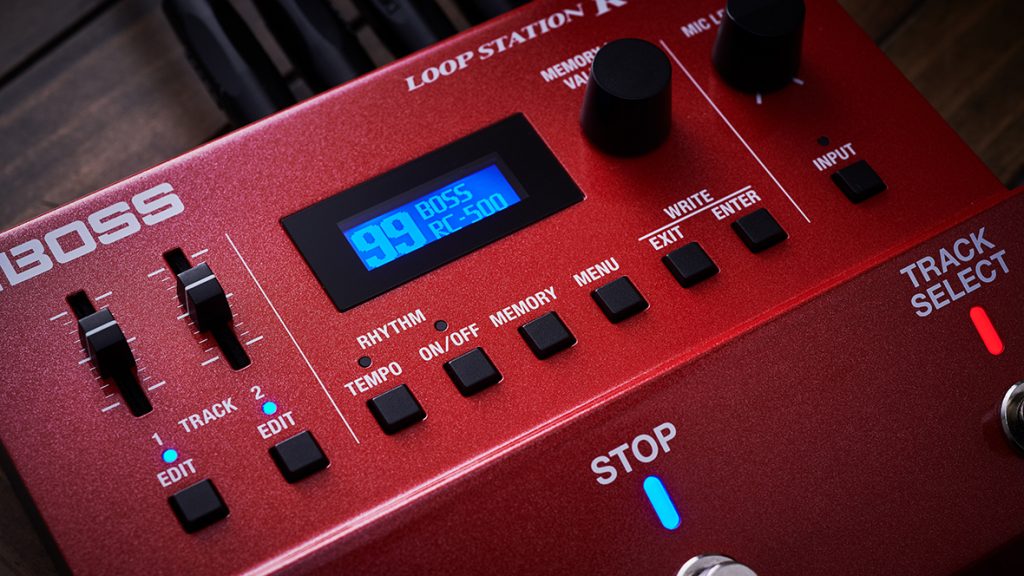
Advanced Loop Pedal Features for Acoustic Guitarists
Effects and Sound Shaping
Reverb and Delay: You should add some space and atmosphere to your sound and a little delay and reverb to your vocals and guitar. The VE-8 gives your vocals reverb, and the RC-600 and RC-10R give your guitar and vocal loops more body.
Pitch Shifting and Harmonizing: Are you looking for harmonies or a bass-like layer for your loops? The VE-8 harmonizes based on your chords, and the RC-600 lets you shift loops up or down.
Distortion and Modulation: Need a bit of grit or texture? The RC-600 has built-in modulation, chorus, and overdrive, so you can shape your tone without extra pedals.
Layering and Performance
Loop Layering: Start simple and build up a rhythm part, fingerpicking textures or vocal harmonies. The RC-600’s multi-track looping makes it easy to create full arrangements.
Dropouts: Want to add some dynamics? The RC-5 and RC-600 let you mute or fade loops for seamless transitions, perfect for building up to a big chorus.
Drum Tracks: Keep your track locked in with built-in drum patterns. The RC-10R syncs your loops with dynamic rhythms for you, and the RC-5 has simple beats that you can trigger as part of your playthrough.
Syncing and Recording
Hook Up External Instruments: Are you playing with a DAW, keyboard, or drum machine? The RC-600 and RC-10R keep everything in sync with MIDI connectivity.
Backing Tracks: Want a fuller sound for your solo set? The RC-600 and RC-5 let you trigger saved loops or full backing tracks, giving you more control over your live performances.
Studio and Live: Recording at home or prepping for a gig? The USB/MIDI connectivity on the RC-600, and RC-5 makes it easy to export loops or integrate them into your setup.
Gig Ready: If you’re gigging, you can store and recall your loops on the RC-600 and RC-5 so you can focus on playing, not setting up between songs or building everything from scratch.
Frequently Asked Questions About Loop Pedals for Acoustic Guitarists
Can I use any loop pedal with an acoustic guitar?
Yes, but pedals with stereo inputs, high-quality signal processing, and, if needed, built-in effects—all while preserving your tone—should be your first option. Almost all BOSS loopers, the industry leaders in loop pedals for acoustic guitarists, have these features.
Do loop pedals change my guitar’s tone?
Good quality loopers, like the BOSS RC-500, RC-1, and every other BOSS looper, will not change your guitar tone negatively. All BOSS pedals are buffered, so there is no loss of tone from your guitar leads. This ensures your acoustic tone remains authentic. Of course, you can change your guitar tone manually with onboard effects like EQ and Compression, but there are no adverse effects to your acoustic guitar tone with a looper from BOSS.
"The best place to put your looper in your signal chain on your pedal board is at the end, as you will loop every possible signal and effect that you have triggered."
What’s the best loop pedal for beginners?
The BOSS RC-1 is widely regarded as the best loop pedal for beginners and acoustic guitarists. Its simplicity and durability make it a great starting point.
What is the most straightforward guitar looper to use?
The most straightforward loop pedals are either the BOSS RC-1 or the BOSS RC-5 loop pedals, which are easily engaged with a simple on-off stomp switch. The RC-5 has additional features, but as far as plug-and-play goes, these two are the industry standard loopers for beginners and intermediates.
Where should a looper go in a pedal chain?
The best place to put your looper in your signal chain on your pedal board is at the end, as you will loop every possible signal and effect that you have triggered. It’s the simplest and most popular option for acoustic guitarists.
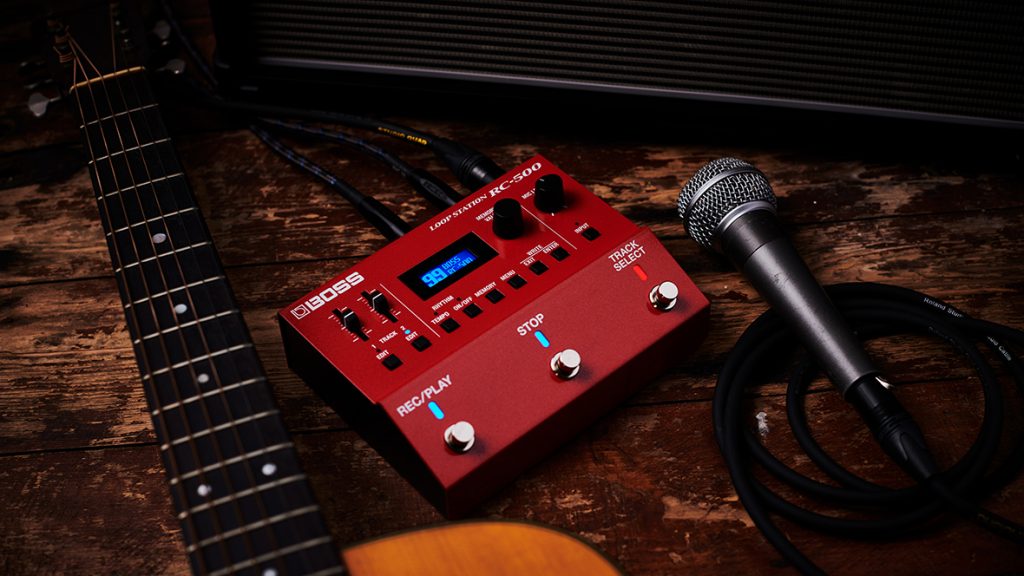
Acoustic Guitar Fun
Loop pedals have become incredibly useful (and fun) tools for acoustic artists, providing an avenue for creative expansion, dynamic performances, and far greater musical expression—no longer are you confined by the sound of one acoustic guitar. With options ranging from the beginner-friendly BOSS RC-1 to the feature-rich BOSS RC-500 and the Wembley arena-worthy BOSS RC-600, there’s a looper perfect for you and your acoustic guitar.
Want to dive deeper into looping? Visit our Loop Station hub for more insights, tips, and resources.



